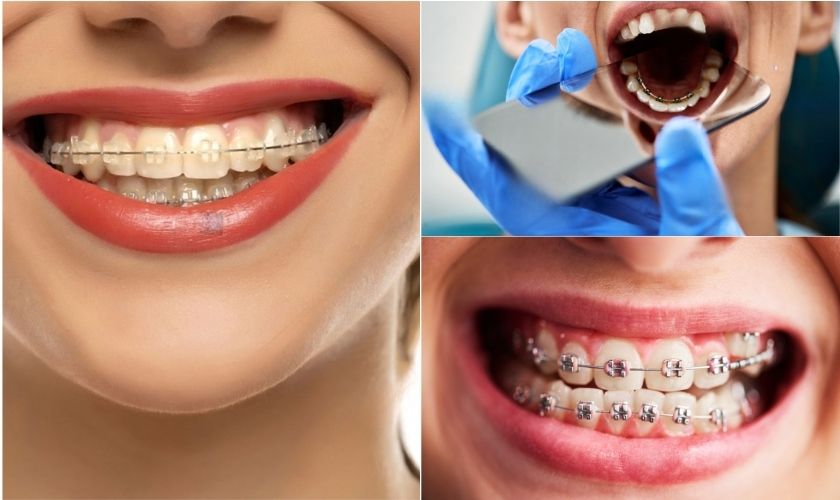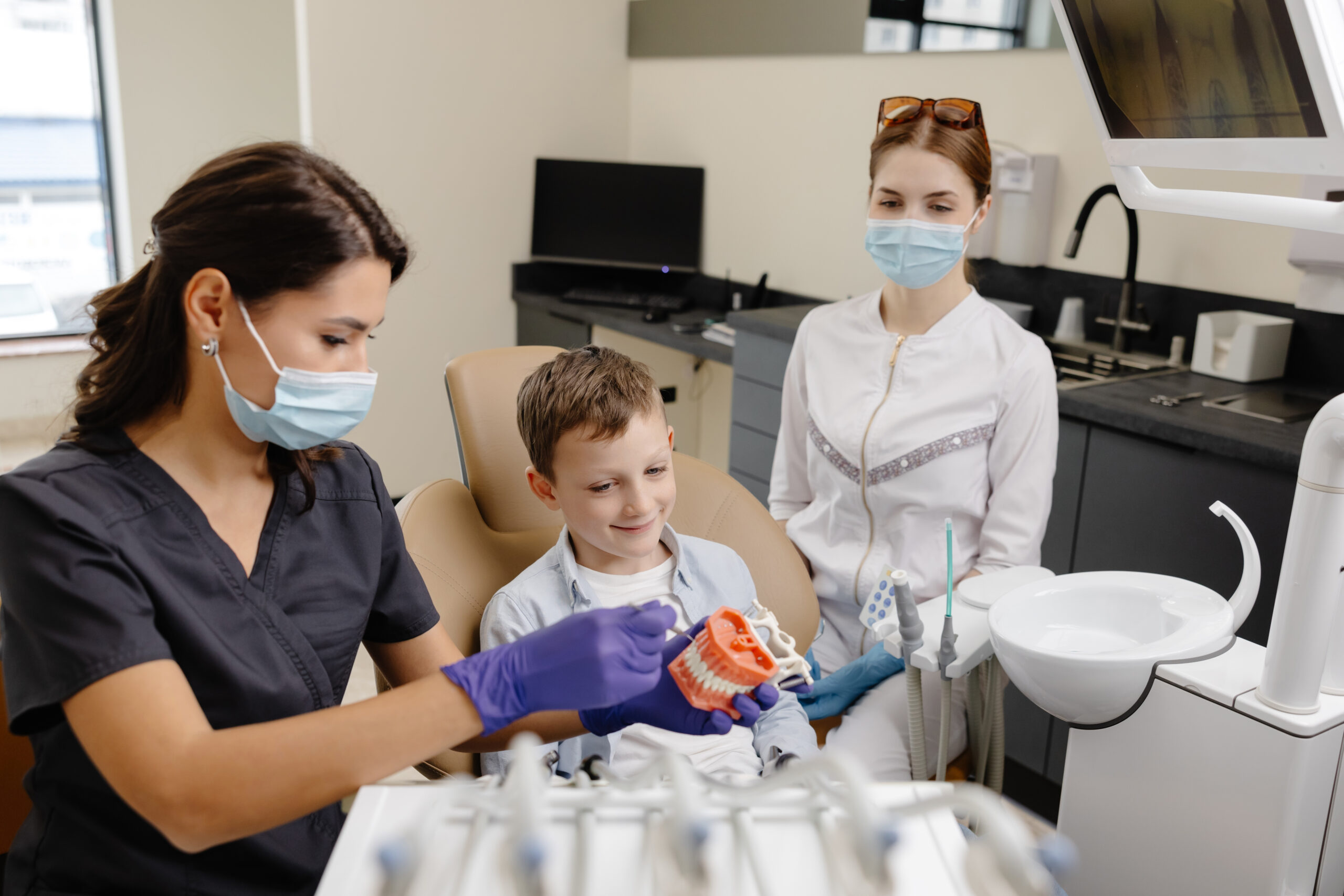Orthodontic treatment usually takes 6 to 30 months to complete. The process of getting braces goes well beyond the day they’re attached to your teeth.
Your braces treatment has three main phases: planning, active treatment, and retention. The actual fitting becomes an exciting milestone that takes about 90 minutes, yet it represents just one step in your treatment process. Your orthodontist will schedule adjustment visits every four to twelve weeks – typically every 6-8 weeks based on your specific needs.
Early orthodontic treatment helps specialists create effective plans and prevent dental issues from getting worse. We’ll guide you through each phase of the orthodontic process, from your first consultation lasting 20 minutes to an hour to the final retention phase where retainers keep your newly aligned teeth from moving back to their previous positions.
The knowledge of braces treatment stages will help you or your family member prepare better for the upcoming dental transformation. Let’s discover what each step of this life-changing process brings!
Step 1: Initial Consultation and Planning
Your orthodontic experience starts with your first visit. This vital appointment lets orthodontists understand what you need and create a treatment plan that works best for your smile.
Medical and dental evaluations
Every orthodontic treatment starts with a full picture of your oral health history. Your orthodontist reviews your medical and dental records to spot any conditions that could affect your treatment. This review helps find why problems happen with tooth alignment, bite function, and jaw position that need fixing. Your orthodontist checks your teeth, gums, and jaw to see their condition and identify potential treatment issues.
Your specialist makes sure your teeth and supporting bone structures can handle treatment before starting any work. Adult patients need more detailed check-ups since dental issues get more complex as we age. Your orthodontist also checks your gum and bone health because healthy gums play a vital role in moving teeth during treatment.
X-rays, photos, and 3D scans
Today’s orthodontic practices use advanced imaging to see your oral structures clearly. These include:
- Digital X-rays that show bone density, impacted teeth, and root positioning
- Panoramic X-rays offering a broad view of your entire mouth
- Photographs of your teeth and face from various angles
- 3D imaging to plan and diagnose accurately
These diagnostic tools are a great way to get information you can’t see during a regular exam. Doctors changed their treatment plans in 40% of cases after looking at 3D scans.
Creating a personalized treatment plan
Your orthodontist develops a customized plan that addresses your specific needs after collecting all this information. This plan looks at your facial proportions, jaw alignment, and tooth position. It also takes your lifestyle priorities and treatment goals into account.
Your orthodontist will talk about different treatment options with you. These might include traditional braces, clear aligners, or other orthodontic devices based on your condition. They’ll explain how long treatment might take and what results you can expect, so you feel good about moving forward with the suggested approach.
Step 2: Active Treatment Phase
Your active phase starts after finalizing the treatment plan. The orthodontic appliances are placed on your teeth and begin to work their magic. This significant stage can last several months to a few years, depending on your case.
Getting braces or aligners fitted
Your treatment begins with the fitting appointment. Your orthodontist will clean and dry your teeth before placing each bracket carefully on the tooth surface with dental adhesive for traditional braces. The next step involves threading archwires through these brackets and securing them with small elastic bands or metal ligatures. You’ll spend about 1-2 hours in the chair for this painless process.
Clear aligners work differently. You’ll receive custom-made trays that fit your teeth perfectly. Your orthodontist makes sure they fit right and shows you how to wear and care for them.
Stages of braces adjustments and tightening
Regular adjustment appointments happen every 4-10 weeks after the original placement. These visits last 15-30 minutes. Your orthodontist will:
- Remove the elastic ligatures connecting brackets to wires
- Assess your treatment progress
- Replace or tighten archwires as needed
- Attach new ligatures (you can choose the colors)
Your teeth move into their desired positions with consistent pressure from these adjustments. Your braces would lose their effectiveness without these periodic tightening sessions as teeth shift.
Monitoring progress and managing discomfort
Your orthodontist tracks your teeth’s movement and bite alignment carefully. Many practices now use advanced monitoring options. You can send pictures of your teeth through smartphone apps to get remote assessment.
You might feel some discomfort after getting braces or following adjustments. This usually feels like a dull ache rather than sharp pain. The sensation peaks within 24-48 hours and goes away in a few days. Here’s how to handle the discomfort:
- Take over-the-counter pain relievers if needed
- Use cold compresses to reduce inflammation
- Eat soft foods temporarily
- Apply orthodontic wax on any brackets that irritate your cheeks
Step 3: The Retention Phase
Your orthodontic treatment doesn’t end after active treatment. The retention phase becomes vital to keep your newly arranged smile intact.
Why retainers are essential
Your teeth need time to settle into their new positions even after braces come off. Daily activities like chewing and grinding can make your teeth move. Your teeth will try to return to their old positions without retainers. This could undo all your orthodontic work. Research shows teeth can start moving back in just three months without a retainer.
Types of retainers: clear vs fixed
You’ll typically have two main retainer options:
- Fixed retainers – These thin wires stay permanently attached to the back of your teeth and remain hidden when you smile. They work best if you had severe crowding before treatment.
- Removable retainers – You can choose between traditional Hawley retainers (wire and acrylic) and clear plastic Essix retainers. You can take them out to eat and clean your teeth.
How long retainers need to be worn
You’ll need to wear your retainers most of the day (22+ hours) for 4-6 months. Some orthodontists might recommend 9 months of full-time wear. After that, you’ll only need to wear them at night—but this should continue for life. Your teeth naturally move as you age, so regular retainer use becomes essential to maintain your new smile.
Step 4: Common Issues Braces Can Fix
Braces do much more than fix crooked teeth. Patients better understand why each stage of their braces treatment matters once they learn about all the dental issues braces can correct.
Overbite and underbite
Upper teeth that overlap lower teeth by a lot create an overbite. A small overbite is natural, but extreme cases lead to jaw pain, worn-down teeth, and gum problems. Research shows that all but one of these children show signs of overbite. The opposite problem, an underbite, happens when bottom teeth stick out past top teeth. This can make chewing tough and cause uneven wear on teeth, plus speech issues. Braces work well to fix both conditions. The treatment moves teeth slowly while rubber bands help teeth line up correctly.
Crossbite and open bite
A crossbite happens when bottom teeth sit outside top teeth in specific spots – either front (anterior) or back (posterior) areas. An open bite means front teeth don’t meet even with a closed mouth. Dental experts note that tooth alignment problems affect about 56% of people around the world. The good news? Braces fix these problems through steady pressure that guides teeth into the right spots.
Overcrowding and spacing problems
Teeth need enough jaw space to line up right. Overcrowding happens without enough space, while spacing issues leave gaps between teeth. These problems make it hard to keep teeth clean and raise the chances of cavities and gum disease. Braces stand out as a reliable fix – they create space for crowded teeth or close gaps between them.
Conclusion
Orthodontic treatment is a rewarding trip to a healthier, better lined up smile. This piece explores the complete process that reshapes your teeth from their original position to where they should be.
The planning phase builds significant groundwork with detailed evaluations and advanced imaging techniques. This full picture helps your treatment work for your specific needs.
The active treatment phase needs dedication to regular adjustments and proper care, whether you pick traditional braces or clear aligners. Your teeth move according to a carefully arranged plan, though you might feel some discomfort after appointments.
Many patients don’t realize how vital the retention phase is. Your newly lined up teeth need time to settle in their positions. Regular retainer use will give you lasting results.
Orthodontic treatment fixes many functional problems like overbites, underbites, crossbites, and overcrowding. These fixes boost your smile’s appearance and your overall oral health.
A clear understanding of each treatment phase helps you start with realistic expectations and good preparation. The process can take several months to a few years. Your new smile’s lasting benefits make it worth the wait. Note that your dedication and your orthodontist’s guidance will determine your treatment’s success and your smile’s permanence.
FAQs
Q1. How long does orthodontic treatment typically take?
Orthodontic treatment usually lasts between 6 and 30 months, depending on the complexity of the case and the type of treatment used. Traditional braces may take 18-24 months, while clear aligners might be quicker for mild cases.
Q2. What are the main phases of orthodontic treatment?
Orthodontic treatment consists of three main phases: planning, active treatment, and retention. The planning phase involves initial consultations and diagnostics, the active phase is when the braces or aligners are applied and adjusted, and the retention phase maintains the results after active treatment.
Q3. How often do I need to visit the orthodontist during treatment?
During the active treatment phase, you’ll typically have adjustment appointments every 4 to 12 weeks. These visits usually last about 15-30 minutes and are crucial for monitoring progress and ensuring the effectiveness of your treatment.
Q4. Are retainers really necessary after braces?
Yes, retainers are essential after braces. Without them, teeth can shift back to their original positions, potentially undoing all the orthodontic work. Initially, you’ll likely wear retainers full-time for 4-6 months, then transition to nighttime wear, ideally for life.
Q5. What common dental issues can orthodontic treatment correct?
Orthodontic treatment can address a wide range of issues, including overbites, underbites, crossbites, open bites, overcrowding, and spacing problems. These corrections not only improve your smile but also enhance overall oral health and function.








